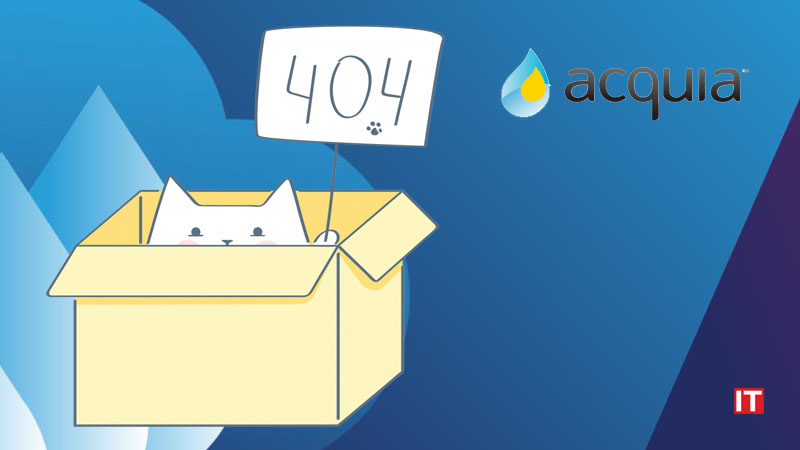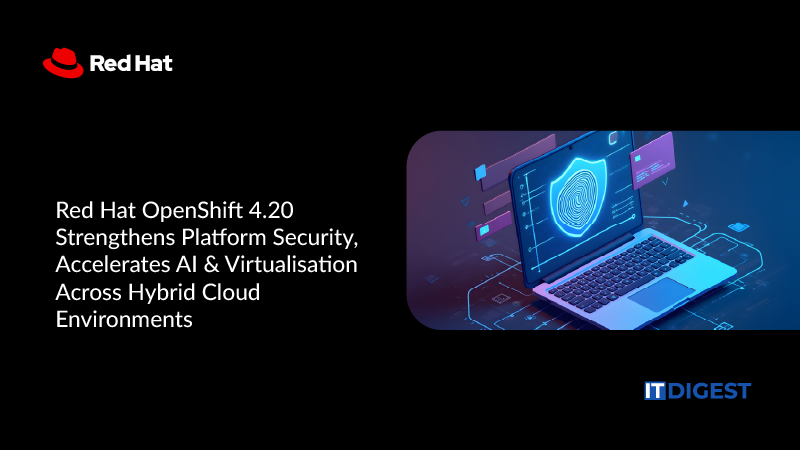Red Hat, Inc., the world’s leading provider of open-source solutions, announced the general availability of Red Hat OpenShift 4.20, the latest version of the industry’s leading hybrid-cloud application platform built on Kubernetes. This release adds new capabilities designed to help accelerate AI/ML workloads, strengthen core platform security, and expand virtualisation strategies from the datacentre to public cloud and edge.
“The real challenge for enterprises today is not just to adopt AI, but to securely bridge the AI lifecycle with their hybrid cloud infrastructure. Platforms like Red Hat OpenShift provide that required layer of consistency and control to manage applications, data and security policies across diverse footprints, ensuring businesses can meet new digital sovereignty demands while accelerating innovation.” Jim Mercer, Program Vice President, Software Development, DevOps, and DevSecOps, IDC
With complexity continuing to rise-and with regulatory pressures mounting-organisations are in need of a consistent, reliable platform that unites applications and services across the whole of their IT footprint. Meanwhile, digital sovereignty is increasingly a strategic imperative: organisations must decide where critical workloads and data should reside. Red Hat OpenShift 4.20 represents a unified and more efficient foundation, natively designed from the ground up with security at its core, to enable sovereign deployments and accelerate application and AI-workload development across hybrid-cloud landscapes.
Improved Platform Security and Manageability
The 4.20 release significantly enhances the security posture of the platform on both fronts: addressing immediate threats and evolving demands of enterprise IT. For instance, OpenShift 4.20 offers initial support for post-quantum cryptography algorithms for mutual TLS (mTLS) traffic among control-plane components to lay a foundation for cryptographic resilience in the long term.
Additional enhancements include:
• General availability of Red Hat Advanced Cluster Security 4.9 and improvements to Red Hat Trusted Artifact Signer and Red Hat Trusted Profile Analyzer, supporting easier security-data management and analysis.
• A “bring-your-own” OpenID Connect option to let customers utilize existing identity infrastructure and retain more control over user data.
• Introducing a “sidecar-less” ambient mode for Red Hat OpenShift Service Mesh that can lower infrastructure overhead without sacrificing pod-to-pod encryption, identity-based traffic policies and observability.
• Two-node high-availability configuration for a smaller footprint, reducing cost with resiliency maintained for edge use cases – a two-node OpenShift configuration with an Arbiter.
• Enhanced networking with BGP in OVN-Kubernetes to better support on-premises deployments with continuous route exchange to external network fabrics.
Together, these features deliver a more manageable, secure, and scalable platform that fits the real-world needs of large enterprises.
Also Read: Barracuda Networks Launches “Barracuda Assistant”, Elevating Security Operations & Resilience
Scaling AI from Experimentation to Production
OpenShift 4.20 helps enterprises accelerate their AI projects from pilot to production with several new tools and APIs. The new LWS API simplifies orchestration and scaling of extensive, distributed AI workloads. The Image Volume Source feature enables organisations to integrate new AI models in minutes without rebuilding application containers. Combined, these innovations work with Red Hat OpenShift AI – or other AI platforms – to reduce time-to-value and operational friction.
Also included is support for the Model Context Protocol (DP) to enable cluster management via popular developer tooling like Visual Studio Code. By addressing the typical stumbling blocks of AI-in-production model integration, orchestration, scalability OpenShift 4.20 positions organisations to move beyond experimentation into real-world deployment at scale.
Production-Ready Virtualisation
In a step toward bringing VMs and containers onto one platform, OpenShift 4.20 further optimizes the OpenShift Virtualization component to let customers manage VMs and cloud-native applications together. The new features include CPU load-aware rebalancing, ARM architecture support for virtualised workloads, and extended hybrid-cloud support, including bare-metal deployments on Oracle Cloud. These will give enterprise customers more control over infrastructure and data placement. An enhanced storage off-loading migration toolkit also accelerates VM-migration from legacy solutions into OpenShift environments.
Supporting Quotes
Mike Barrett, Vice President and General Manager, Hybrid Cloud Platforms, Red Hat: “The pace of innovation in enterprise IT is accelerating, driven by the demands of AI and a shifting landscape caused by new regulations and corporations needing to mix sovereignty into their technology investments. With Red Hat OpenShift 4.20, we are delivering a foundation that not only keeps pace with these changes but helps our customers lead them. We’re providing the tools to unify their infrastructure, from legacy virtual machines to modern approaches for virtualization, all while maintaining the enhanced security posture, confidence and production control that is essential for market changes coming in 2026.”
Luc Choubert, Vice President, Platform Engineering, Amadeus: “Our journey to multi cloud was driven by the need for massive scale and speed, moving from our private datacenter and supporting our 10,000 engineers. Red Hat OpenShift has become the unified foundation for this transformation, allowing us to securely automate our real-time key applications from infrastructure to deployment. Enhancing OpenShift with OpenShift Lightspeed could boost our teams’ efficiency and ability to scale by harnessing generative AI to provide instant, context-aware answers to admins of all experience levels. We are particularly interested in the continuous focus on platform innovation in this latest release, which is essential to give us the long-term agility and resilience needed to serve the global travel industry.”
Gustavo de Abreu Fiuza, DevOps Engineer, Cloud Platforms, Banco do Brasil “When Banco Brazil first adopted Kubernetes, we found scaling the technology to meet the demands of Latin America’s largest bank had considerable operational overhead. Moving from vanilla Kubernetes to Red Hat OpenShift immediately reduced that overhead while expanding our hybrid cloud strategy. As a result, we have tripled our number of managed applications without increasing headcount. We’ve fully embraced GitOps and we even offer optimisation services to our developers to keep per-application costs down. The platform also enabled us to more easily include the public cloud via Microsoft Azure Red Hat OpenShift.”
Venkat Ramakrishnan, Vice President and General Manager, Portworx by Pure Storage: “By optimizing Portworx data management on Red Hat OpenShift, we deliver a powerful application development solution for greater reliability and operational efficiency from the datacenter to the cloud and out to the edge. Our support for Red Hat OpenShift 4.20 and the enablement of two-node OpenShift with arbiter on Portworx extends critical data resilience, management capabilities and services across multiple edge locations, helping customers realise the future of edge infrastructure.”
































